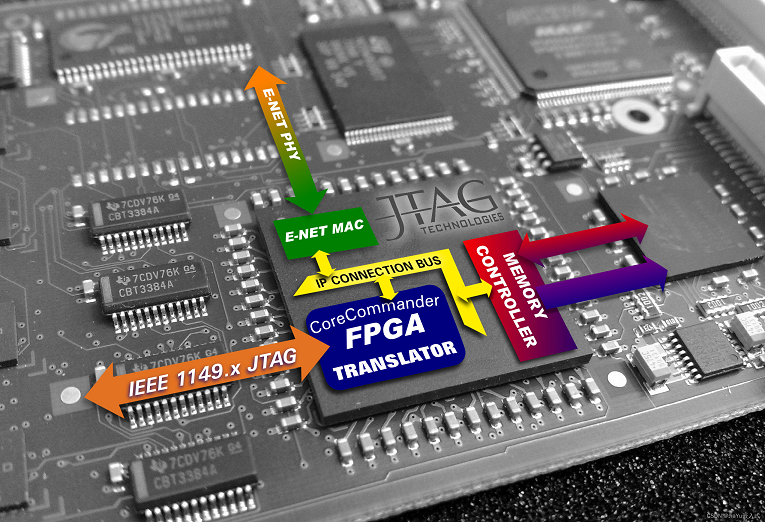Time: 2025-03-13 11:48:38View:
Heterogeneous Architecture in FPGAs refers to the integration of different types of processing units and specialized hardware blocks within a single FPGA device. Unlike traditional homogeneous architectures, where the FPGA fabric consists of uniform logic cells, heterogeneous architectures combine programmable logic with dedicated hard IP blocks, processors, and other specialized components. This approach allows FPGAs to handle a wider range of tasks more efficiently, balancing flexibility and performance.

1. Programmable Logic Fabric:
The core of the FPGA, consisting of configurable logic blocks (CLBs), look-up tables (LUTs), flip-flops, and interconnect resources.
Used for implementing custom digital logic and algorithms.
2. Hard IP Blocks:
DSP Blocks: For high-performance arithmetic operations (e.g., multiply-accumulate).
Block RAM (BRAM): For on-chip memory storage.
High-Speed Serial Transceivers: For protocols like PCIe, Ethernet, or SATA.
Clock Management Units (PLLs/DCMs): For clock generation and synchronization.
Dedicated, fixed-function blocks for specific tasks, such as:
3. Embedded Processors:
Soft Processors: Implemented in the programmable fabric (e.g., MicroBlaze, Nios II).
Hard Processors: Dedicated processor cores integrated into the FPGA (e.g., ARM Cortex-A/M in Xilinx Zynq or Intel SoC FPGAs).
4. Specialized Accelerators:
AI/ML Accelerators: For neural network inference.
Video Processing Units: For image and video processing.
Cryptographic Engines: For encryption/decryption tasks.
Hardware blocks optimized for specific tasks, such as:
5. Interconnect and Interfaces:
High-speed buses and interfaces (e.g., AXI, Avalon) to connect different components.
Peripheral interfaces (e.g., GPIO, I2C, SPI, UART) for external communication.
1. Performance:
Dedicated hard IP blocks and processors provide higher performance for specific tasks compared to implementing them in the programmable fabric.
2. Power Efficiency:
Specialized hardware blocks consume less power than equivalent logic implemented in the fabric.
3. Flexibility:
The programmable fabric allows customization for unique or evolving requirements.
4. Time-to-Market:
Pre-built hard IP blocks reduce development time for common functions.
5. Scalability:
Heterogeneous architectures can be tailored to a wide range of applications, from low-power IoT devices to high-performance computing.
1. Signal Processing:
DSP blocks and high-speed interfaces make FPGAs ideal for wireless communication, radar, and audio/video processing.
2. AI and Machine Learning:
AI accelerators and high-performance processors enable real-time inference and training.
3. Automotive:
Used in ADAS (Advanced Driver Assistance Systems), infotainment, and vehicle networking.
4. Data Centers:
Accelerate tasks like encryption, compression, and network processing.
5. Industrial Automation:
Real-time control, motor control, and vision systems.
6. IoT and Edge Computing:
Low-power processors and customizable logic for smart devices.
Combines ARM Cortex-A53 (application processor), Cortex-R5 (real-time processor), programmable logic, and hard IP blocks (DSP, BRAM, transceivers).
2. Intel Stratix 10:
Integrates ARM Cortex-A53 processors, FPGA fabric, and hard IP blocks for DSP, memory, and high-speed interfaces.
3. Xilinx Versal:
Adds AI engines and vector processors to the traditional FPGA fabric and processors for AI/ML and high-performance computing.
4. Lattice ECP5:
Combines programmable logic with DSP blocks and high-speed interfaces for low-power applications.
1. Partitioning:
Divide the design into tasks best suited for the programmable fabric, hard IP blocks, and processors.
Example: Use DSP blocks for arithmetic, processors for control, and fabric for custom logic.
2. Toolchain and Workflow:
Use vendor-specific tools (e.g., Xilinx Vivado, Intel Quartus) to map designs to the heterogeneous resources.
Leverage high-level synthesis (HLS) tools to accelerate development.
3. Interfacing Components:
Use standard buses (e.g., AXI for Xilinx, Avalon for Intel) to connect processors, memory, and custom logic.
4. Optimization:
Optimize resource usage by leveraging hard IP blocks for performance-critical tasks.
Minimize power consumption by using low-power modes and efficient partitioning.
5. Verification:
Simulate and verify the interaction between different components (e.g., processors, fabric, and hard IP blocks).
1. Complexity:
Designing for heterogeneous architectures requires expertise in multiple domains (e.g., software, hardware, and system integration).
2. Toolchain Limitations:
Vendor tools may have limitations in optimizing designs for heterogeneous resources.
3. Debugging:
Debugging interactions between different components can be challenging.
4. Resource Management:
Balancing resource usage between programmable fabric and hard IP blocks requires careful planning.
Heterogeneous architecture in FPGAs combines the flexibility of programmable logic with the performance and efficiency of dedicated hardware blocks and processors. This approach enables FPGAs to address a wide range of applications, from low-power edge devices to high-performance computing systems. By leveraging the strengths of each component, designers can create highly optimized and efficient solutions tailored to their specific needs. However, designing for heterogeneous FPGAs requires careful partitioning, optimization, and verification to fully exploit the capabilities of the architecture.